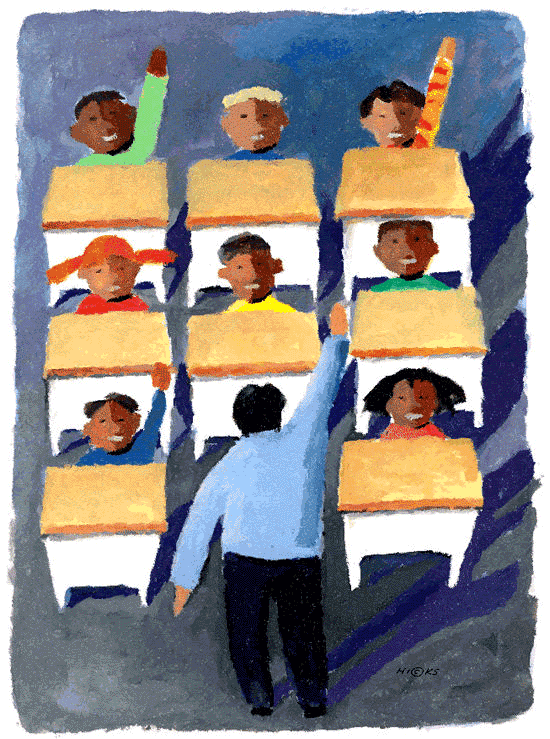 There are many school factors that may contribute to students’ underachievement, including the school size and impersonality, evaluation systems, acceptable peer social roles, grade structures, and extracurricular opportunities. Many school factors are out of a teacher’s control. There are, however, controllable factors.
There are many school factors that may contribute to students’ underachievement, including the school size and impersonality, evaluation systems, acceptable peer social roles, grade structures, and extracurricular opportunities. Many school factors are out of a teacher’s control. There are, however, controllable factors.
Interpersonal interactions between teachers and students may contribute to student underachievement. For example, if a teacher has lower expectations for, or responds negatively to, certain students, achievement by those students may be negatively affected. In middle schools, students are usually faced with larger and more complex environments than they encountered in elementary schools. There is often less emotional support from teachers, more emphasis on relative ability and competition, and decreased contact between teachers and students. It is imperative that middle school students be able to identify with their teachers and connect to the school environment. Supportive teacher-student relationships are critical for adolescents who need enduring, stable, and caring teacher support.
A teacher’s behavior towards a student is a major determinant of the student’s perceived control. The relationship between the actions and outcomes, or the contingency of teachers, is important to how a student performs. Clear expectations and consistent feedback tend to enhance student achievement. A students’ perceptions about the involvement of teachers are also factors. Whether a student perceives the teacher to be helping or chastising affects the student’s academic performance. For a gifted student, accepting unsolicited teacher assistance may be perceived as an indication of weakness or incompetence. Demonstrating a positive interest in knowing more about the student as an individual and taking his or her opinions into consideration when making decisions are important also.
Teacher morale influences student morale. Students who perceive that their teachers are satisfied with their jobs have been found to be more likely to achieve.
Next Section: Effective Educational Environments
Previous Section: Getting Started: Evaluating Student Perceptions